Nearly 250 billion emails are sent every day, according to the 2012 Email Marketing Benchmark Report. That’s one email every 0.00000035 seconds. Clearly, emails have become a prime communication vehicle.
Here are some tips on how to write the perfect email that gets the results you want.
The subject line.
The subject line is quite often the deciding factor in whether your message is read or deleted. Some are straight forward, such as “First Quarter Estimates” while others may be of a persuasive nature or perhaps seeking information. Whatever the reason for the email may be, the subject line needs to be truthful and informative and tempt the reader into wanting to know more about the content. In that case, strive to retain an air of mystery, but remain truthful. If your email has nothing to do with the subject line, the recipient will have a bad impression of you – particularly if the email is related to marketing.
The salutation.
The salutation sets the tone for the main body of the email. In the opening words, the reader is making a judgment about you, what you want and whether they will continue reading the email. Seeming too formal or impersonal, or, conversely, unprofessional, can cast a negative first impression. If you know the person’s name, address him or her personally. If not, select a greeting such as “hello” rather than “to whom it may concern.” The latter is stuffy and formal. In business you need to build or maintain relationships, so sounding friendly but professional is always a good approach.
The body.
Brevity is generally the key. Assuming the recipient opens your email, a page-long essay will probably inspire him or her to close without finishing it. Keep your message as short and concise as possible. Deliver information in a digestible way. Your purpose for writing needs to be clear and presented in a way that will appeal and relate to the recipient. Of course there may be a call for longer emails, but this is almost always for business, non-marketing purposes. Be sure that email is the right venue and that it is being sent at the right time.
The ending.
Assuming the recipient sticks with your email to the end, the way you sign off is as important as the way you start. End your email by making clear what you would like the reader to do, but don’t do it in a commanding way. Phrases such as “I look forward to hearing from you” or “Please let me know your thoughts” invite a response and make it clear you would like to hear from them. If there is no action required of the recipient, sign off with “many thanks” or “kind regards” or something similar and your name. Remember, rapport is typically not achieved by signing off with “Mr.” or “Mrs.”
The signature block.
Your signature block should include your name, title, company name, company address, phone number, fax number and possibly the web site address. Additionally, many individuals now also include their professional social media information such Facebook and LinkedIn addresses when relevant, so the person can have a better look at what you do, reinforcing your professionalism in his or her eyes.



